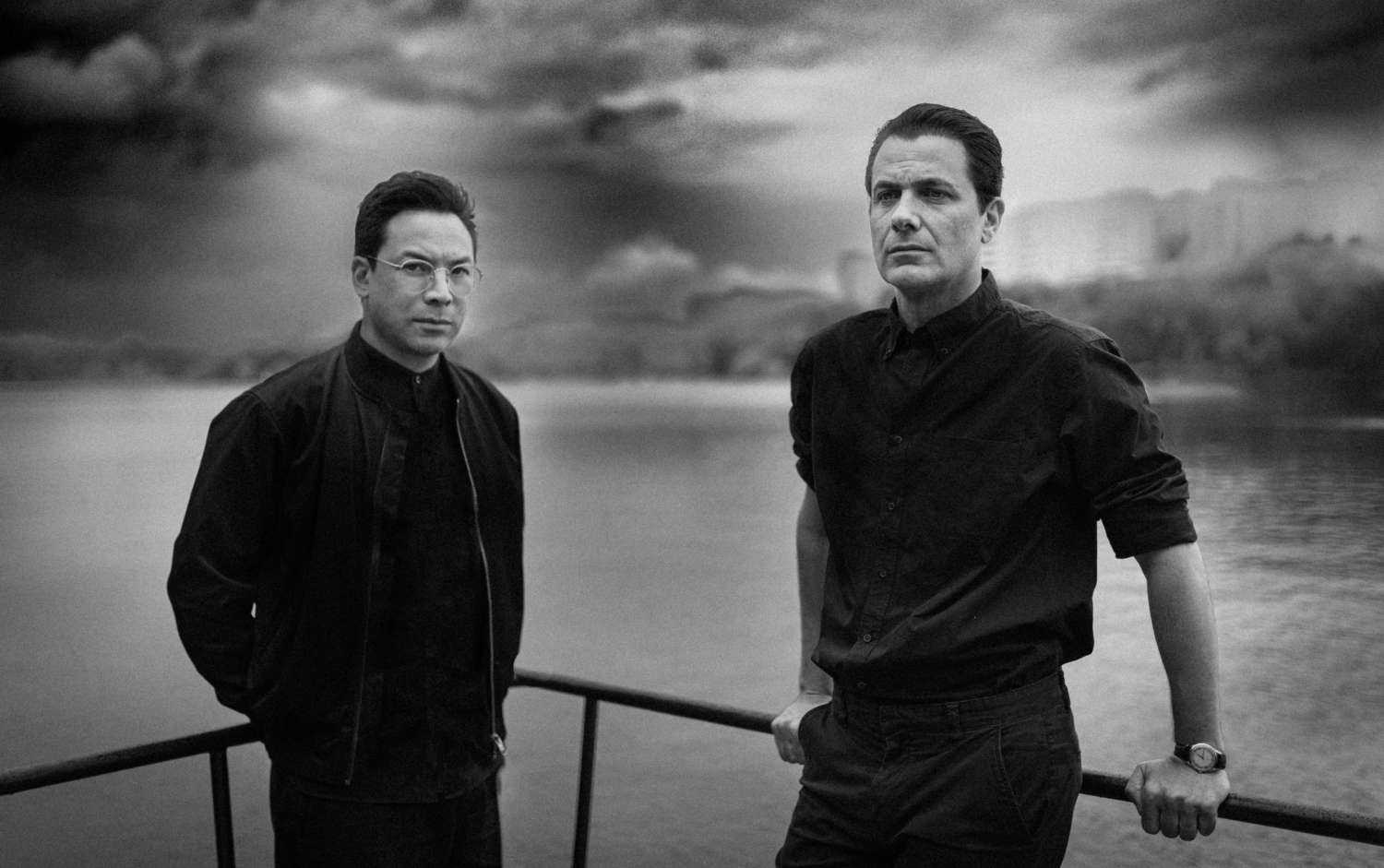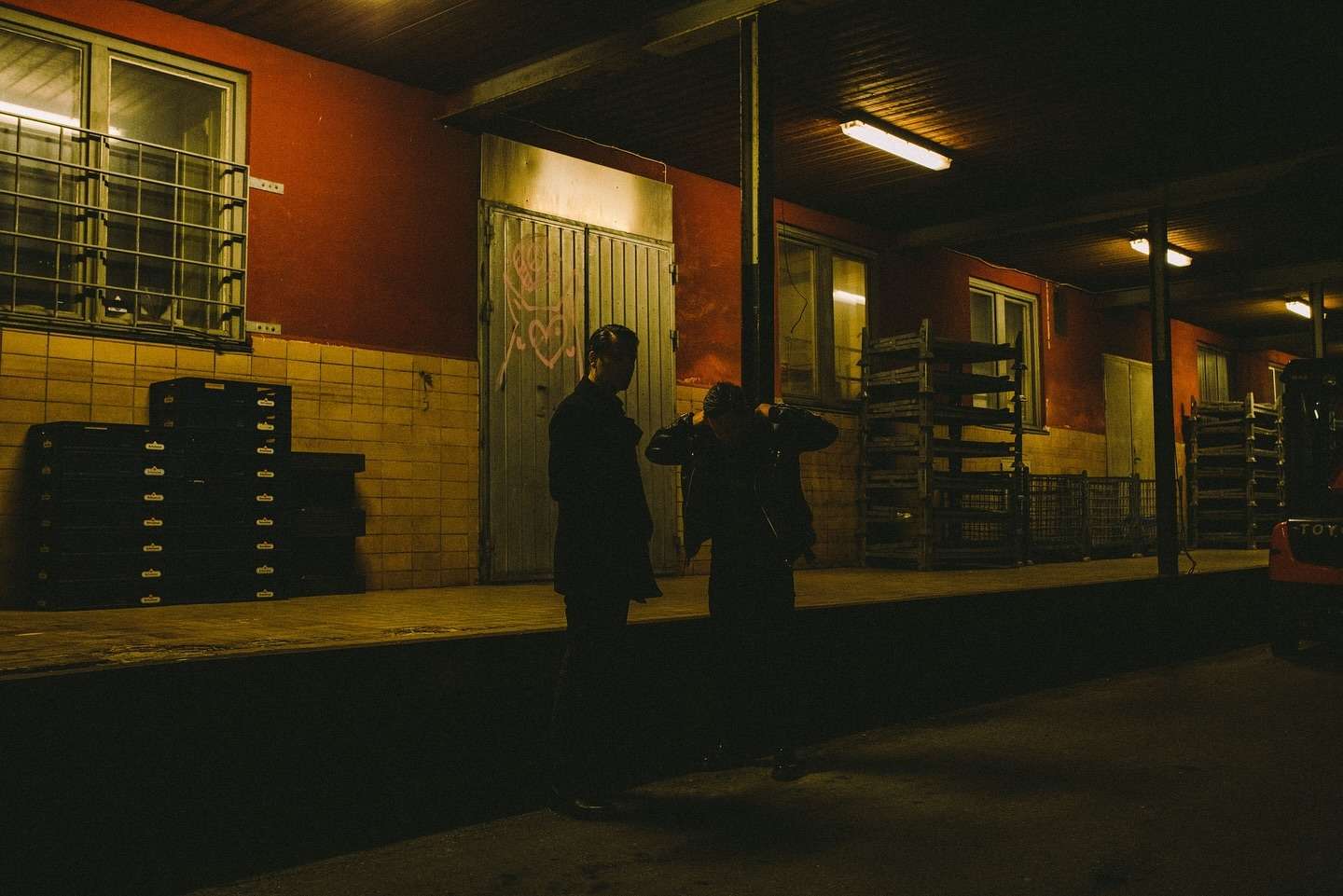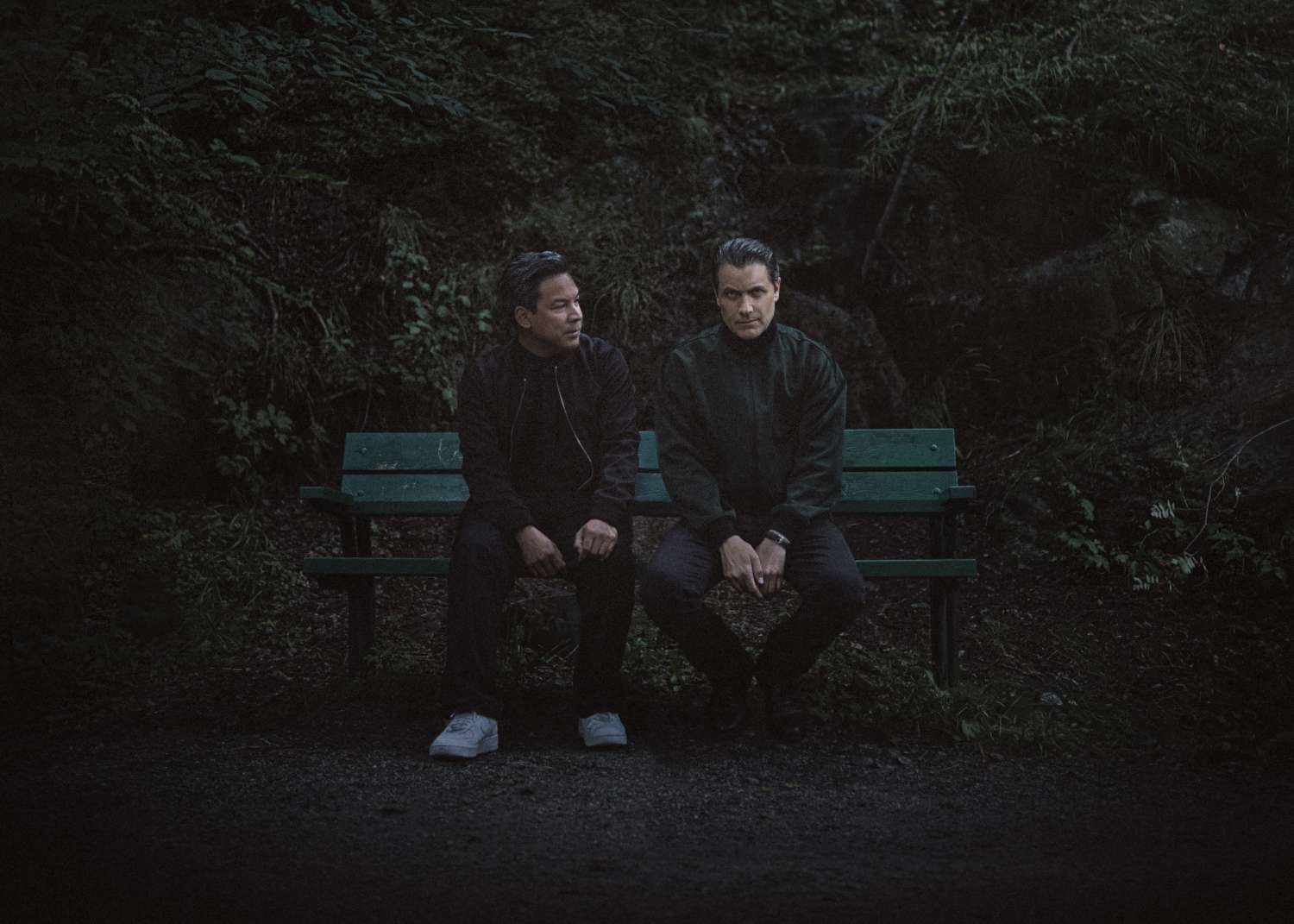Hatif – das sind Markus Majdalani und Johan Eckerström aus Stockholm. Seit der Gründung 2020 kreiert das schwedische Duo feinste Elektro-Klänge mit fesselnden Melodien, die einen nicht mehr loslassen. Sie selber beschreiben ihre Musik als „eine Landschaft in der Abenddämmerung, ein kolorierter Schwarz-Weiß-Film. Es geht um die Bewegung durch Räume, sowohl physische als auch emotionale.“

Foto: © Daniel Kwon
Regelmäßig ist die Band mit ihren Synthie-Songs bei unseren Musik-Tipps und in unseren Playlists (hier) vertreten. Kürzlich ist mit „Broken bucket“ die erste Single des kommenden zweiten Albums erschienen, das über Town And Towers Records veröffentlicht wird. Ein guter Grund für uns, endlich mehr über Hatif zu erfahren.
Who is behind Hatif? What made you decide to start the project?
Hatif consists of Markus Majdalani and Johan Eckerström. We started during the pandemic when circumstances led us to exchange ideas and files online, combining our different musical backgrounds. Johan had mostly been working on instrumental music, while Markus was coming from a more traditional band setting, and we wanted to explore something entirely electronic paired with strong melodies. Our connection sparked from this shared desire to push boundaries and merge our influences, leading to the formation of Hatif.
Can you tell us a few things about the connection between you two and your journey into music?
We first connected through a mutual friend. Johan was initially brought in to help produce Markus’ band, but that plan didn’t materialize. Both of us were interested in exploring something new. And the duality creates a tension in our music, often a creative push-pull that gives our sound its distinct identity.
If you had to describe your music in terms of not music … what would you say?
Our music is like a landscape at dusk, a colorized black and white movie. It’s a contrast between something tense, grainy, and yet soulful. It’s about movement through spaces, both physical and emotional.
What are you looking for in music? What are the boundaries that you look to explore with music?
We aim to explore the tension between melody and dissonance, between the electronic and the organic. Our music often walks the line between accessibility and complexity—intense, but always melodic. We’re interested in addressing contemporary issues, such as emotional distance, conflict and rebellion, through our sonic and thematic choices.
What is sound to you?
Sound is a language that exists beyond words. Sometimes a more direct way of communication. It’s a way of expressing what can’t be spoken directly. We are particularly drawn to synthetic, almost alien sounds, which provide a kind of raw and unfiltered expression.

Foto: © Daniel Kwon
What are your first musical memories? When did you first fall in love with sound?
Markus: Probably Bowie’s album Let’s Dance on a C90 cassette. But I also heard Arabic music at home during my youth. That mix of worlds is part of what drove me to explore sound more deeply.
Johan: I don’t know, really. But I remember discovering Skinny Puppy for the first time. Their music was unlike anything I had ever heard before – it was chaotic, yet beautiful, with layers of emotion and information that felt both overwhelming and deeply personal. Those moments have stuck with me.
Which person, artist, or incident inspired you when you first started making music?
David Bowie has been a significant influence on both of us, especially in terms of his fearless approach to change and reinvention. In the beginning Johan was also influenced by bands like Portishead and Front 242, while Markus was into 70s rock and bands of the early 90s, and also played the Hammond organ in a few bands.
What impact do your surroundings have on your art?
We’re based in Stockholm, where the cold, northern atmosphere seeps into our music. There’s also the influence of Arabic melodies, and our own personal experiences mix into what we create. Being surrounded by news, politics, and human struggles constantly feeds into the themes we explore in our compositions.
How does the birth of a new composition happen for you? How does your compositional process work?
It typically starts with demo tracks that feature harmonies and melodies. From there, we transform these initial ideas into full compositions. But it’s never a straightforward process—it’s a constant struggle of strong wills and contrasting tastes. Our different influences often lead to argumentation and creative tension, but we believe it’s this friction that gives the songs their unique character. The contrasts, the push and pull between us, ultimately shape the music into something richer and more dynamic, creating a sound that could only emerge through this collaborative conflict.

Foto: © Daniel Kwon
How does the visual aspect relate to and reflect your music?
Our visual presentation is a continuation of the themes in our music. The visualizers often focus on nature—the beauty and rawness that mirror the layers in our music. For our photos we collaborate closely with photographer Daniel Kwon. We prefer cinematic, story-like visuals that capture the emotional tension of our sound, avoiding the typical industrial aesthetics common in the scene.
What artistic influences, outside of music, have had a significant influence on how you approach your art?
Literature, film, and the evening news have shaped how we approach our music. We draw inspiration from the narratives of conflict, distance, and human connection—or lack thereof. These influences find their way into our lyrics, visuals, and overall presentation.
What’s next for you? What are you most looking forward to?
We’re releasing new material, including the single “Broken bucket” on September 20, and several more singles that will lead up to a full-length album next year. We’re also working on booking more live shows and performances.
Bandcamp Facebook Instagram Twitter
(796)

Hinterlasse ein Kommentar
An der Diskussion beteiligen?Hinterlasse uns deinen Kommentar!